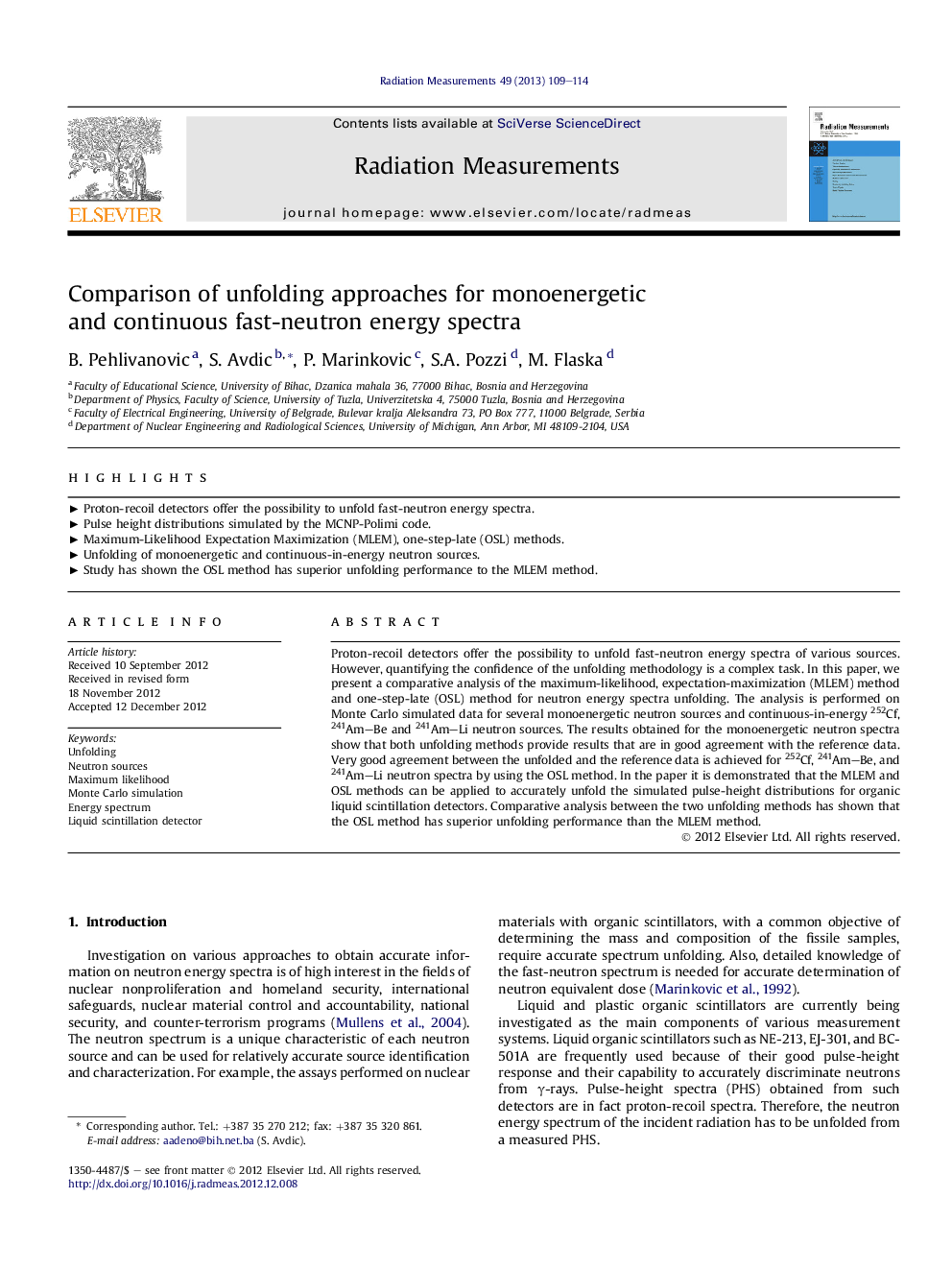| Article ID | Journal | Published Year | Pages | File Type |
|---|---|---|---|---|
| 1888426 | Radiation Measurements | 2013 | 6 Pages |
Proton-recoil detectors offer the possibility to unfold fast-neutron energy spectra of various sources. However, quantifying the confidence of the unfolding methodology is a complex task. In this paper, we present a comparative analysis of the maximum-likelihood, expectation-maximization (MLEM) method and one-step-late (OSL) method for neutron energy spectra unfolding. The analysis is performed on Monte Carlo simulated data for several monoenergetic neutron sources and continuous-in-energy 252Cf, 241Am–Be and 241Am–Li neutron sources. The results obtained for the monoenergetic neutron spectra show that both unfolding methods provide results that are in good agreement with the reference data. Very good agreement between the unfolded and the reference data is achieved for 252Cf, 241Am–Be, and 241Am–Li neutron spectra by using the OSL method. In the paper it is demonstrated that the MLEM and OSL methods can be applied to accurately unfold the simulated pulse-height distributions for organic liquid scintillation detectors. Comparative analysis between the two unfolding methods has shown that the OSL method has superior unfolding performance than the MLEM method.
► Proton-recoil detectors offer the possibility to unfold fast-neutron energy spectra. ► Pulse height distributions simulated by the MCNP-Polimi code. ► Maximum-Likelihood Expectation Maximization (MLEM), one-step-late (OSL) methods. ► Unfolding of monoenergetic and continuous-in-energy neutron sources. ► Study has shown the OSL method has superior unfolding performance to the MLEM method.
